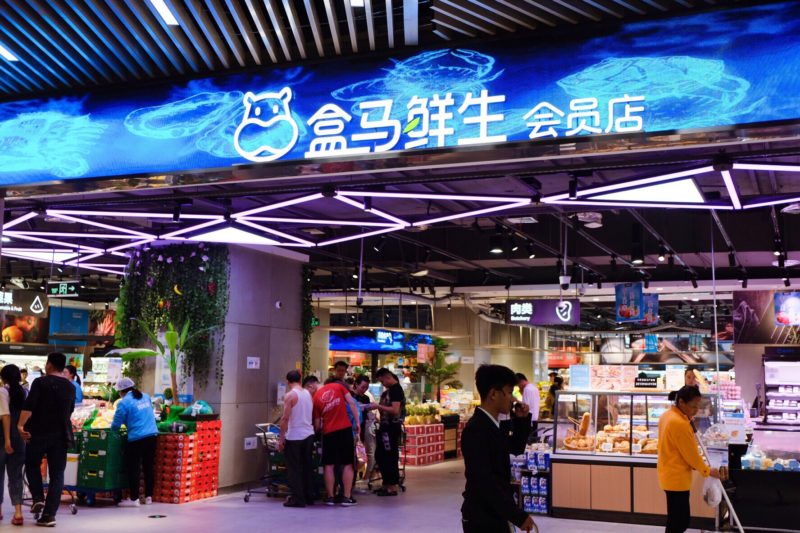New Retail








Retail in China is marked by the unstoppable rise of New Retail. According to the definition of Alibaba Research Institute, “new retail” refers to a combination of online and offline business models, namely “online + offline + logistics”. After experiencing a 14.8% growth in 2020, while offline retail was contracting due to the measures adopted to contain Covid-19, new retail in China is expected to decelerate to a single-digit growth in 2022 from 12.5% in 2021. However, forecasts predict that the scale of the new retail market in China will exceed 9 trillion yuan in 2025. More than one-third of New Retail consumers in China are in the age group 25-34 years old, while consumers between 18 and 24 years old account for 20% of total shoppers, which together amount to more than half of Chinese online consumers.
We have robust experience in e-commerce and New Retail market research, as well as in consulting for global retail brands, big supermarket chains in China, cosmetics and luxury brands. Our retail industry projects have included distributor analysis, competitive analysis, brand analysis and social media listening.
China is the world’s largest e-commerce market and online sales in 2017 surpassed 1 trillion US$. China has approximately 800 million smartphone users, and mobile payments, social media, and e-commerce form a ubiquitous part of the retail consumer journey.
According to the National Bureau of Statistics, in 2019, online retail sales of physical goods in China reached 10.6 billion yuan, recording a 19.5% increase compared to the previous year, while in 2020 they hit 11.8 trillion yuan, exhibiting a 10.6% rise over 2019. In 2021, e-commerce in China is expected to account for 23% of total retail sales, as a result of the great popularity enjoyed by mobile payment technology, social business models, and electronic wallet systems.
Global Consumer Insights survey found that compared to the global average of 22% online purchases, about 50% of Chinese consumers use e-commerce platforms to buy products every week. In addition, compared with the global average of 21%, 59% of Chinese consumers are likely to shop online. In China’s cashless society, 86% of consumers use mobile payment, while the global average is only 24%.
The wide adoption of digital media among Chinese shoppers has driven retailers to transform from pure O2O to New Retail in China, giving consumers greater flexibility in choosing how and when to interact with merchants. This seamless integration of online and offline relies on the ubiquity of wireless Internet, mobile payment, AI, sensors, and big data analysis in China.
Payment is an important aspect of retail. After the introduction of QR code payment in China, facial payment has become a new way to improve payment efficiency and security. Driven by leading payment service providers, facial payment has spread very rapidly: in 2019, there were approximately 118 million facial payment users in China, but it is expected to increase to 761 million by 2022.
There are two key players dominating the New Retail industry in China: Alibaba and Tencent. Their strategies are significantly different Alibaba prefers using its own resources to lead the transformation, while Tencent is establishes collaborations to improve efficiency.
Alibaba’s new retail strategy mainly includes three areas: logistics, sales and retail technology. The aim is attracting shoppers to its offline supermarkets leveraging online traffic streams through using superior online resources to receive feedback, create complementarity and improve user experience.
Instead, Tencent’s “new retail” approach consists in improving efficiency through connections, thanks to WeChat and its incredible tools, such as WeChat Pay and WeChat Mini-programs. Tencent Group started to invest in the “new retail” industry in 2017. Currently, the big tech has invested in Huitongda and JD Express for the logistics side; and in JD.com, Pinduoduo and Vipshop in the e-commerce field.
From the point of view of purchase channels, the most popular Chinese retail e-commerce platform include Meituan Flash Sale, Ele.me New Retail, JD Daojia and other platforms, which generally have a great reputation and high traffic. Such e-commerce platforms vaunt the highest proportion of users, as well as vertical self-operated O2O retailers, such as Hema Xiansheng and Meituan Maicai.
During the first half of 2019, the number of rural Internet users in China reached 225 million, and around 39.8% of rural households had access to Internet. With the spread of Internet coverage in rural areas, the consumption potential of lower-tier cities is bound to increase, turning rural users into the driving force of New Retail in China.
The Covid-19 pandemic had a major impact on the traditional retail industry. While containment measures forced physical stores such as large shopping malls to close their doors, New Retail in China experienced a rapid development with the integration, digitalization and modernization of the supply chain.
During the pandemic, the online sales of fresh food on delivery platforms in China, such as Jingdong Daojia, Daily Youxian and Dingdong Maicai, grew significantly. Vegetables, fruits, eggs, dairy products, and frozen food saw the major increase in sales.




